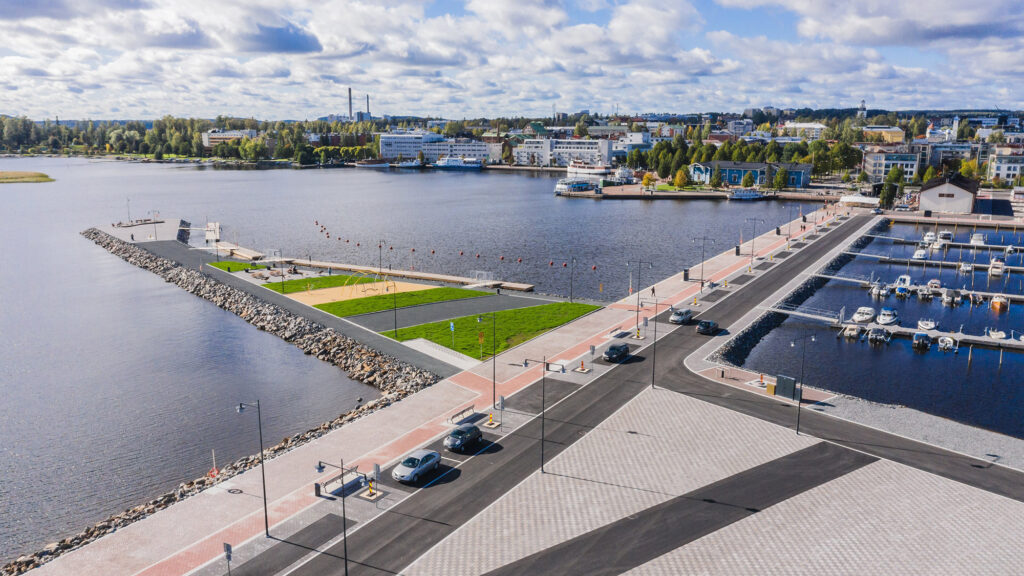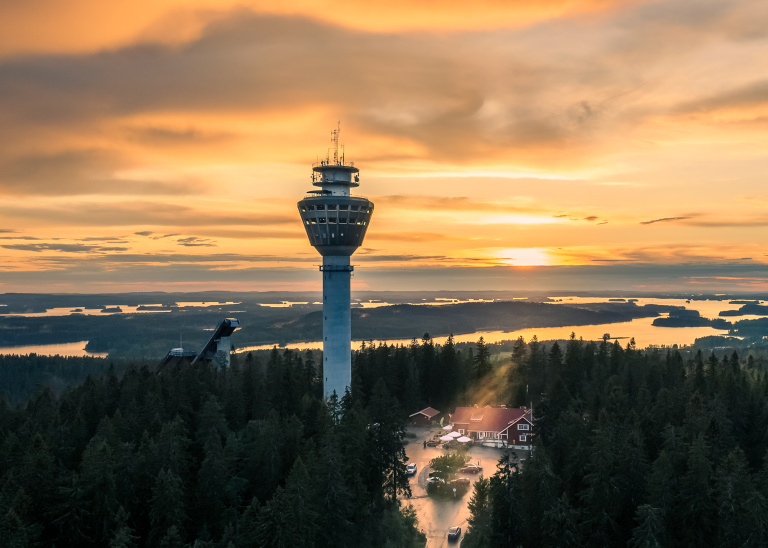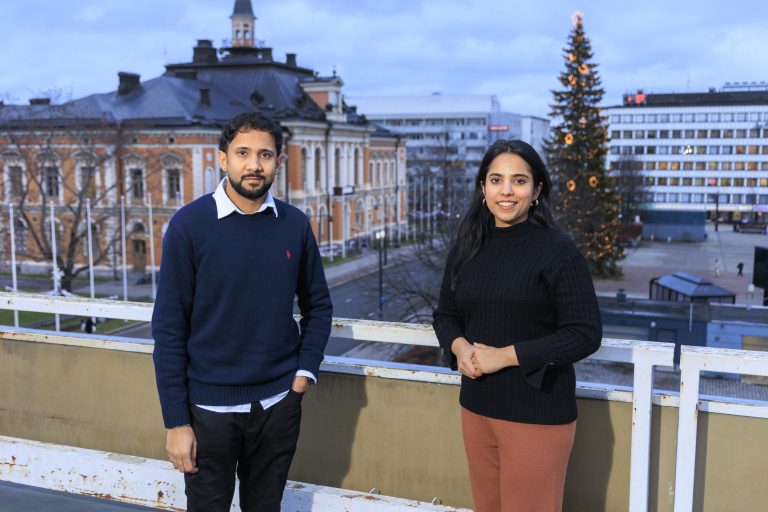Study: How North Savo’s ecosystems are building the future

Ecosystem studies in North Savo highlight the region’s key sectors, the companies operating within them, networks, and strengths. They provide businesses and professionals considering relocation to the area with a better understanding of North Savo’s potential and guide further development of the ecosystems.
The study examined the ecosystems of four sectors, as well as the industrial ecosystem of North Savo. The sectors analyzed were ICT, technology industry, tourism, and wellness technology and health. The functioning of the ecosystems was explored using available data and interviews.
The study highlights the opportunities of ecosystems
The sectors were examined on three levels: action, experimentation, and visibility. Action refers to the recognized key areas within the ecosystem and examples of companies operating in them. Experimentation highlights research and development activities as well as educational opportunities in the region related to the key sectors. Visibility brings together related networks, events, and occasions.
“North Savo’s ecosystems represent the region’s diverse and layered economic structure. These studies compile data and bring attention to many sectors and areas that may previously have remained in the shadows. Certain leading companies naturally stand out, but we believe the studies diversify the picture and unpack the bigger picture,” says Henri Helve, an expert from MDI, the organization that conducted the study and is part of Finnish Consulting Group Ltd.
A key element of the study was to broadly highlight how the ecosystems function and the opportunities they contain.
“It’s important to note that the sectors are not strictly delineated, but the aim was to gather companies and networks influencing various sectors,” says MDI’s lead expert Valtteri Laasonen.
Development needs: Accelerating commercialization and strengthening strategic cooperation
At a general level, the ecosystems operate across North Savo, though certain sectors are more prominent in specific areas.
“Each sector also contains its own key areas, which may have developed around larger companies or research and development activities – or both. Based on the studies, it’s also clear that educational institutions in the region are well integrated into the ecosystems,” Helve explains.
The study also aimed to identify key development needs for the ecosystems. One significant finding concerned the commercialization of innovations. It was noted that companies need more support and the right partners to bring ideas, prototypes, and research results to market. Agile product development and identifying innovations require not only testing environments but also models that streamline the process.
“Many good ideas are generated within ecosystems and companies, but commercialization can stall if the right contacts aren’t in place or there isn’t time to look for partners,” Laasonen says.
Another clear development area is ecosystem coordination at a broader level. While there are many excellent projects and initiatives by different actors, the potential is much greater.
“Broader and clearer coordination and a shared direction would be highly beneficial,” Helve says.
From a business perspective, there is also a need for service guidance. Companies don’t always recognize their own strengths or know how to make use of local networks. Economic development services have an opportunity to take a stronger role in guiding and connecting actors.
“Understanding the impact of ecosystems is also important on an individual level: how one’s job, education, or career ties into the bigger picture, and what opportunities the region’s companies offer.”
North Savo’s strengths on display – Ecosystems as engines of attractiveness
Terho Savolainen, Director of Economic Development in Iisalmi, recognizes the development needs mentioned. His area of responsibility is Upper Savo, which is especially known for its strong technology and food industries. However, the companies forming the broad support network around leading firms remain largely unknown to many.
“Broader development activity and organization around it still require work, even though we’ve made a good start. A strong local cluster would be a draw for our region. From a talent perspective, local youth and those considering moving here often don’t recognize the opportunities offered by our region’s strong international companies. We still have work to do there,” Savolainen says.
Savogrow, the joint economic and vitality company of six municipalities, sees the strength of its ecosystems in their locality. Heavy industry, wood processing, and food companies operating in rural municipalities form the bedrock of the area, playing a significant role as taxpayers and employers. Still, according to Savogrow, external recognition remains an area for development.
“One of our region’s biggest future development areas will be invest-in activities. We are seeking a cross-sector model for our development company’s work in cooperation with municipalities,” says Savogrow CEO Tapani Laitinen.
Jukka Pitkänen, Director of Economic Development in Kuopio, notes that North Savo’s ecosystem studies showcase the region’s leading sectors, companies, and networks in a way that strengthens the vitality of the entire region.
“They not only describe the current state but also guide future development – especially RDI activities and the allocation of EU funding,” he says.
Pitkänen adds that the region must communicate its expertise and potential even more systematically.
“By highlighting our companies and strengths, we also build an image of an attractive place to live and work. This is crucial for attracting talent and new investments. Making ecosystems visible isn’t just development work – it’s a strategic message: North Savo is a place to live well, work meaningfully, and build the future,” Pitkänen says.
North Savo’s ecosystems in brief
The ecosystem studies mapped and visualized key sector actors such as companies, educational institutions, research institutes, other relevant organizations, local communities, and networks available for sector stakeholders. The studies also highlighted regular annual events and fairs connected to the sectors.
The technology industry in North Savo employs over 10,000 people and generates more than €4 billion in total revenue. It forms the largest ecosystem in the study, where research activities are strongly linked to company and network operations.
“Regionally, for example, the KesTech cluster in machinery and equipment manufacturing and the TechSavo project are strong actors supporting cooperation and business growth. It’s also noteworthy that the Geological Survey of Finland (GTK) and VTT Technical Research Centre of Finland have local offices,” says Helve.
North Savo’s ICT ecosystem can be described as a growing entity. Regionally, it is comprehensive and serves local needs well, though research and innovation activities are concentrated around the Kuopio area.
“Strong experimentation platforms and events such as Session gatherings have developed around the ecosystem’s three key areas, advancing networking and innovation in the sector,” says Helve.
The tourism ecosystem has seen growth in the number of companies in recent years—employing over 7,000 people and generating €2.4 billion in revenue.
“Events and occasions are the gems of tourism, bringing visitors to the region. Visit-activities are already strong both locally and nationally. One identified area for improvement is stronger messaging around broader offerings,” Helve notes.
In the wellness technology and health ecosystem, R&D is active and company operations are export-oriented. Altogether, these sectors employ over 5,500 people and generate more than €710 million in revenue.
“The presence of international top companies in the Kuopio area has boosted the region’s profile, visibility, and credibility as a world-class location. I would highlight Kuopio Health cooperative as a key actor committed to advancing skills, research, and cooperation in the field,” Helve says.
The industrial ecosystem study identified seven priority areas. The strongest are machinery, electrical and metal industries, forestry, and food industries. Significant activity is also found in mining, chemical, pharmaceutical, clothing and textile, and building product industries. Industry in North Savo employs over 12,000 people and generates over €5 billion in total revenue.
Studies (in Finnish)
Download the ecosystem study (pdf) and the ecosystem infographics (pdf).
Download the industrial ecosystem study (pdf)
The Talent First project
The study is part of the Talent First project’s efforts to improve the availability of skilled labor in North Savo. The study was completed by MDI in May 2025. Talent First is a project co-funded by the EU. It involves 12 actors from North Savo and is administered by the City of Kuopio. www.talentfirst.fi


